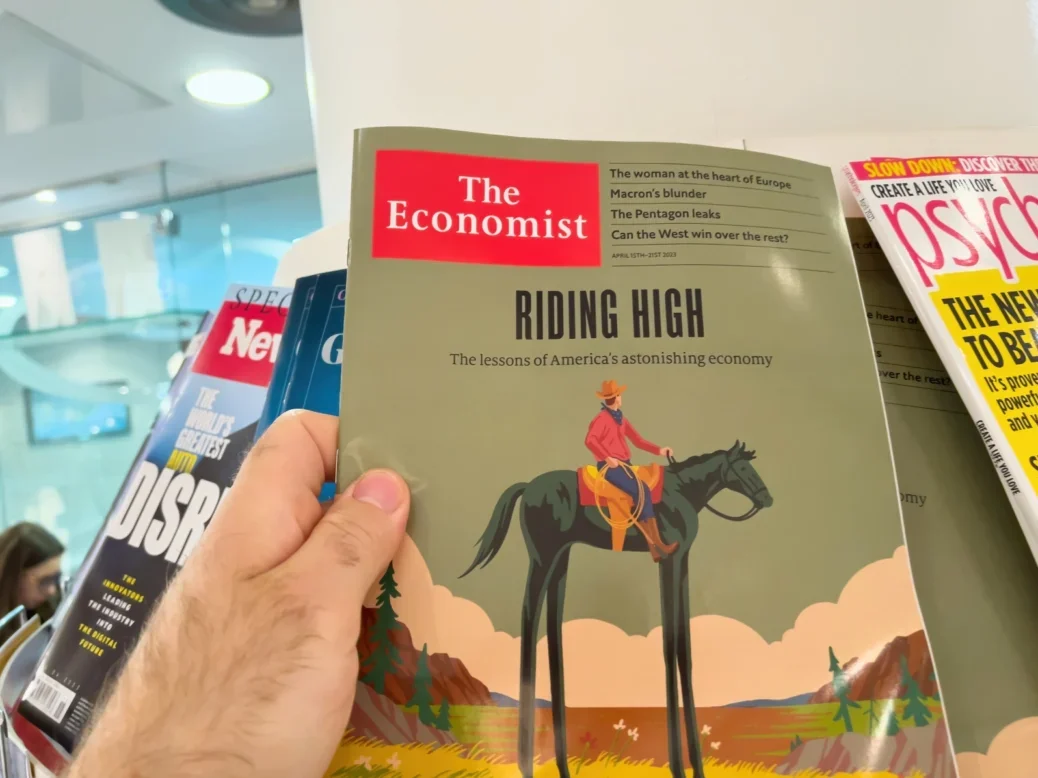
The Economist has reported a record year for revenue fuelled by growing subscriptions.
Operating profit was up 2%, or 11% at constant currency according to the the UK-based publisher, to £48.1m in the year to 31 March 2025.
Before the Covid-19 pandemic, in the year to March 2019, profit was £31m.
The indicative share value, calculated by an independent valuation adviser for The Economist although it is a private company, was £31.50 for the second year in a year – up from £30 in both 2022 and 2023, and £25 in 2021.
Meanwhile revenue continued to grow past last year’s high. Last year The Economist made £368.5m, up 3% year on year at actual exchange rates (or 4% at constant currency).
Subscription revenue makes up £244.7m or two-thirds of the total, the publisher said.
Paid subscriber numbers grew by 3% to 1.25 million, another new high. Digital-only subscribers were up 8% and accounted for 85% of new starts in the year (2024 saw 3% growth with 86% of new subscriptions digital-only).
Some 68% of subscriptions are now digital only, up from 44% in 2021.
According to ABC (which also includes non subscription newsstand sales), there were 970,074 digital paid subscriptions to The Economist in the second half of 2024 of which 10,469 paid the full price and 871,082 paid somewhere between 20% and 99% of the full rate.
In print, the average circulation between July and December was 442,957, down 10% in a year and 21% in two years. Some 90% of the total print circulation came from paid subscriptions.
ABC also said The Economist had 5.3 million unique users on average each month to its core app in the second half of 2024, up from 3.8 million in the first half of the year.
The Economist said there has been a 12% increase in customer lifetime value amid work on a redesigned offers page, more dynamic paywall experiences and express checkout options.
Enterprise subscriptions were said to have seen “particularly encouraging” seeing double-digit growth with more organisations than ever signed up. A focus was put on marketing and making sure as many people as possible activated their accounts.
Economist Group chief executive Lara Boro said in the publisher’s annual report: “Profit, revenue and subscription volumes all showed steady rises this year, growing despite some continuing headwinds for our client-facing businesses, and with a strong second half compensating for a relatively slow first six months…
“The results are encouraging in themselves—and as a foundation for our future. They are the fruits of five years’ investment in people and technology that has given us the platform and momentum we need to innovate in response to rapidly-changing customer habits.”
Investment areas have included a significant expansion of video at The Economist, a new content management system for research and analysis division Economist Intelligence, new human resource systems, and new uses of AI including in the CMS, translation and user recommendations.
The Economist added AI translations to its “snack-sized”, lower-priced app Espresso last year as the tech was deemed to have improved to the necessary extent. Espresso is now free to access for students.
After launching on Tiktok in July 2022, last year The Economist added a vertical video carousel to its app and website, and the Espresso app, publishing a short video – whether an explainer, a visual investigation or book recommendations – every day. It said subscribers “love it” and have spent nine million minutes watching so far. A dedicated home for all video was launched within the main app in April this year.
The Economist app received 270 million visits in the year, up from 239 million the year before, according to the annual report. A new CMS for the app was rolled out by March this year “with great results: user experience and engagement have improved and the app offers the editorial team ever-expanding flexibility”.
Work has also been done on The Economist’s sign-up and checkout journeys, search engine optimisation, app store visibility and product pages.
Economist Impact, which works on bespoke partnerships across policy research, branded content, events and other areas, saw revenue down 1% year on year to £97.7m while Economist Intelligence saw revenue rise 5% at constant currency to £44.2m driven by subscription growth with a retention rate of 91%.
This year the two B2B offerings are being brought together in one structure with the aim “to better serve clients by enabling them to leverage our intelligence, policy research, marketing services, events and corporate subscription services seamlessly”.
Email pged@pressgazette.co.uk to point out mistakes, provide story tips or send in a letter for publication on our "Letters Page" blog
